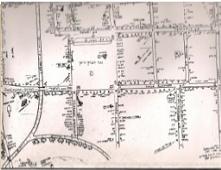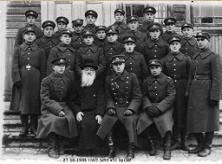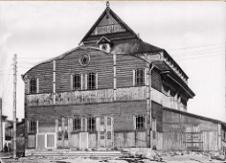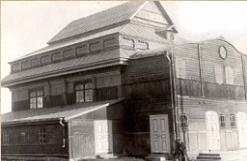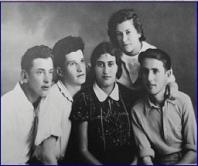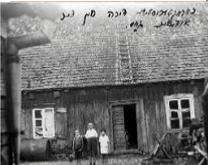VILKAVISKIS
A small town in Southern Lithuania
Where the Jewish Community is no more
Shtetl Life - Firemen !!!!!!!!!!!
25the Anniversary of the Fire Fighters, Vilkaviskis, Lithuania, 1931
Fire fighters reunion in Vilkaviskis, Lithuania
Jewish volunteers fire-fighters, Vilkaviskis, Lithuania, c.1920
Members of the Fire Fighters in Vilkaviskis, Lithuania, 1920 At the front Itzhak April wearing white ribbon
Members of the fire fighters in Vilkaviskis, Lithuania, 1922
Representatives of the Fire Fighters in Vilkaviskis, Lithuania, 1920.
The Fire Fighters Orchestra playing in the Market Square, Vilkaviskis, 1932
Meir Warshawsky in a fire fighter uniform, Vilkaviskis,
Kabarti fire fighters
GOD LIKES, CLOSE AID
TOMS SUCHINSK
Vilkaviškis firefighters at their shed, 1936 Photo by Suvalkija Sūduva Culture Center-Museum of Vilkaviškis District
120 years ago in Vilkaviškis, three people gathered in a team and started to develop organized activities. In independent Lithuania, the number of members reached one hundred. Hundreds had their own homes, equipment, flags and villagers respect. The volunteer group was called Vilkaviškis Firefighters Society.
Interestingly, in the interwar period, all Lithuanian firefighters were held in their hands by an abyss. There were army and volunteer firefighter associations in Vilkaviškis. The firefighters' headquarters was considered as an example for other towns in the district. In Vytautas Street there is a house that survived in 1924. built exclusively for Vilkaviškis rescuers.
XIX century at repeated fires drowned the city in smoke and tears. Wooden crusts with straw roofs ignited the slightest spark. Residents have consistently demanded the establishment of a fire team in the city. But the tsarist authorities did not give permission. There were fears of repeated Polish and Lithuanian uprisings or any organized activity.
Three giant fires destroyed the city in 1882-1888. More than three hundred homes were destroyed. Many people left Vilkaviškis without shelter. The population has halved. The city called the residence of the bishop of the Seine was threatened to disappear. But the townspeople lament the views of the Suwalki governor.
At the end of the nineteenth century, more than 70 percent of Jews lived in Vilkaviškis. By the efforts of the city intelligentsia, Jews Marijampolskis, Sheffler, Lipskis, 1899 A team of volunteer firefighters was established in Vilkaviškis. Official release from the Russian Empire Firefighters Association was received on July 24th. In the past, there was no need to call on the citizens who had been hit by the fires. Within a few days, a team of volunteer firefighters was gathered.
During the First World War almost all the accumulated inventory disappeared. The Germans took the tools to the front. The old city firefighters retreated to the Russian Empire. The remaining fires were extinguished already on the streets of the city by marching to the Kaiser officers.
When the independent state was regained, Jews were guarded by the townspeople. In Betmidstadt, next to the synagogue, the entire team was temporarily accommodated. The holy books were studied here, and there was a hurry to rescue the burning city halls.
The Society consisted exclusively of intellectuals. Old firefighter, city bourgeois Jonas Vilčinskas was elected president of the Society. In the fire, he flushed with other volunteers. The head of the team was also the city doctor E. Račkauskas. The Society consisted of: stock officers, police station secretary, town pharmacy owner, riflemen commanders, army regiment adjutants and merchants. At the same time, the number of members exceeded one hundred.
1939 Firefighting Board. Photo by Suvalkija Sūduva Culture Center-Museum of Vilkaviškis District
During the event, rescuers wore tarpaulins. Later, the team started to motorize - the first motor water pump was bought. Initially, the water hoses were twisted on a wooden wheelchair. City Municipality bought an electric siren for the Society, 60 pcs. firefighter costumes each year, 2500 litas. Fire extinguishing fires had to be driven by horse-drawn carriages, later on by fire trucks. There were three of them. The installed tank holds 1000 liters of water. The team had military discipline, reluctantly dismissed from office. Vilkaviškis firefighters arrived at the fire in Virbalis town in 8 minutes.
Techniques and tools were used for fairs in Königsberg. The city soon had two cars for manual fire fighting. Initiative of Burmese J. Vilčinskas in Vytautas Street, City Center, 1924 there was a brick roof of firefighters. Clothing and shoe stores are located in a house (building next to the current sauna) in the Cultural Property Register today.
In the interwar period there was a scene inside the fire brigade house. Performances, lotteries were constantly performed. In this way, the Society's budget was supplemented by revenue from the sale of tickets, the rented hall. Brick shelter was heated, tidy. Vytis, the portrait of President Smetona, was on the wall in the most honorable place. Later, it was the commemorative act of the Society's 35th anniversary.
1934 300 guests flocked to the city of Vilkaviškis. Firefighter delegations came from the towns of Stalupėnai, Gumbinė, Eitkūnai, Širvintos. That year, the Society celebrated its 35th birthday. The services were held twice: in the synagogue and in the local crew church (the present church). After the parade market square, guests gathered in the fire brigade. Greetings and toast were said. In the press it was named as a common snack. In the evening, a "banquet" took place in the city club. After that, an outing was planned near the forest of Uosia.
Gustavs Feterauskas, the Lithuanian fire brigade chairman, left a tremendous footprint in Lithuanian history annals. It is considered to be the developer and shareholder of the Population Census and the State Insurance Institution Lithuania.
Chairman of Lithuanian Firefighters Union Gustavas Feterauskas, 1934 Photo by Suvalkija Sūduva Culture Center-Museum of Vilkaviškis District
Born in 1874 in Pilviškiai. The parents were farmers. Studied at Marijampolė and Liepaja gymnasiums. Graduated from St. Petersburg University. Fifteen years served in the Russian Insurance Society. 1912 posted to the International Congress of Insurance Actors in Amsterdam. During the First World War he worked in the Petrapila Lithuanian Committee to exile the exiles. To Bolsheviks to Lithuania in 1920 was taken as collateral. Appointed Director of the Central Statistical Bureau. For almost 20 years he was the manager of the Lithuanian state insurance company. 1931-1940 Chairman of the Firefighters Union. The Union united all groups of firefighters in Lithuania. Gustav Feterauskas led the firefighters of the Riflemen, the Railway, the Volunteer and the Armed Forces. Lithuanian, Latvian, and Estonian fireworks honor award, D.L.K. The Order of Gediminas.
He came from Kaunas to the jubilee of Vilkaviškis Society. Symbolic, as he came to greet the Vilkaviškis, he had just celebrated his 60th anniversary. Died in 1944 retreating from the red plague flowing to Lithuania at the end of World War II.
Six years before the occupation of Lithuania. In the city, the usual life was boiled. A photo album was gathered on the command desk at Vytauto Street inside the firefighter's hall. Next to the shelf, the Society's Bookstore has several hundred beautifully bound books and magazine sets. In the interwar period, it was popular to have annual subscribed publications in their covers. There was a huge flag. On one side of the flag is the emblem of firefighters, and on the other side is the gilded coat of arms of the city of Vilkaviškis. The flag was celebrated by the Chancellor of Vilkaviškis Curia, Prelate Laukaitis. The long-time fireman, the owner of the city pharmacy, J. Skinkys has installed a first aid room at his own expense. In the yard garage - a small museum with old and unused firefighter tools.
Calvary firefighters in 1938 after visiting our city wrote: "If you want to see an exemplary provincial volunteer fire brigade, you have to go to Vilkaviškis." At that time, the laurel wreaths were woven to the team leader, ideologist, organizer, sponsor Jon Vilčinskas. It is emphasized that his influence was felt by other district teams. He spent six years in the city bourgeoisie. J.Vilčinskas plunged into fire-fighting affairs. 1940 last time assembled the Vilkaviškis rescuers. The annual report was discussed. It was their last meeting. The future of J.Vilčinskas is not known.
The dead members of the Society were immortalized on a memorial board. At the names of the dead in the memory of the people, the motto of the flaming fire-fighters is: "Glory to God, to the neighbor in the past. When you save yourself the life and wealth of your neighbor, without mercy, following this noble sacrifice, we devote this memorial plaque. Vilkaviškis a team of volunteer firefighters. 1939
Bernardinai.lt
http://www.bernardinai.lt/straipsnis/2019-03-20-dievui-garbe-artimui-pagalba/174928?fbclid=IwAR34oWeLdFKkE_neBrzRZVs7J1qnpYKhJgvwvIn01KPTR5iOal6BEmsl39c
Read other texts by this author.



Vilkaviškis firefighters at their shed, 1936 Photo by Suvalkija Sūduva Culture Center-Museum of Vilkaviškis District
